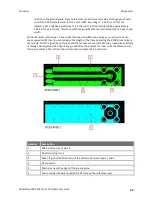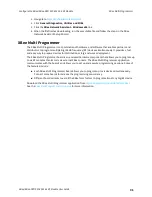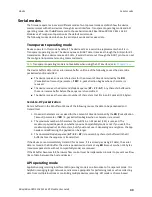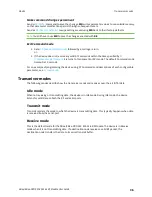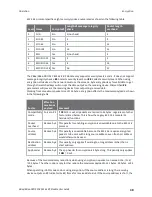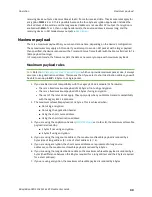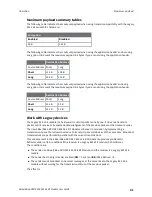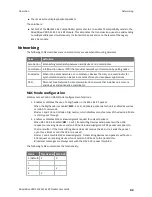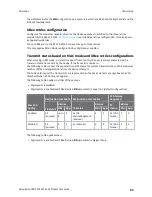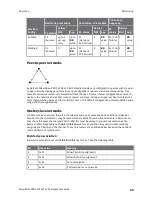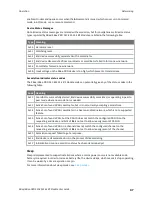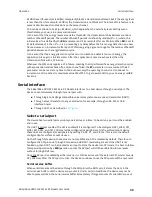
Operation
Maximum payload
XBee/XBee-PRO S2C 802.15.4 RF Module User Guide
40
receiving device outputs a Receive Packet (0x81) frame for received data. These same rules apply for
encryption if
MM
is 0 or 3. This is possible because the four-byte encryption App header includes the
short address of the sender and the long received address is not used for API output. If encryption is
enabled with
MM
of 1 or 2, then no App header exists, the source address is always long, and the
receiving device in API mode always outputs a
Maximum payload
There is a maximum payload that you can send at one time, depending on the device's configuration.
These maximums only apply in API mode. If you attempt to send an API packet with a larger payload
than specified, the device responds with a Transmit Status frame (0x89) with the Status field set to 74
(Data payload too large).
In Transparent mode, the firmware splits the data as necessary to cope with maximum payloads.
Maximum payload rules
Note
Refer to
NP (Maximum Packet Payload Bytes)
which can provide maximum packet size, it always
assumes a long destination address. This means that if you select a short destination address, you will
be able to send up to
NP
+ 6 bytes in a single packet.
1. If you enable transmit compatibility with the Legacy 802.15.4 module (S1 hardware):
l
There is a fixed maximum payload of 100 bytes if not using encryption
l
There is a fixed maximum payload of 95 bytes if using encryption
l
The rest of the rules do not apply. They apply only when you disable transmit compatibility
with the Legacy 802.15.4 module.
2. The maximum achievable payload is 116 bytes. This is achieved when:
n
Not using encryption.
n
Not using the application header.
n
Using the short source address.
n
Using the short destination address.
3. If you are using the application header (
set to
0
or
3
), the maximum achievable
payload is reduced by:
n
2 bytes if not using encryption.
n
4 bytes if using encryption.
4. If you are using the long source address, the maximum achievable payload is reduced by 6
bytes (size of long address (8) - size of short address (2) = 6).
5. If you are using encryption, the short source addresses are promoted to long source
addresses, so the maximum achievable payload is reduced by 6 bytes.
6. If you are using the long destination address, the maximum achievable payload is reduced by 6
bytes (the difference between the 8 bytes required for a long address and the 2 bytes required
for a short address).
7. if you are using encryption, the maximum achievable payload is reduced by 5 bytes.


